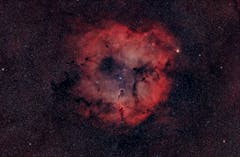Astronomik H-alpha 6nm CCD MaxFR 31mm Filter – Perfect for Fast Optics
MaxFR Astronomik Filters: Ideal for Ultra-Fast Optical Systems.
Designed to meet the increasing demand for filters compatible with ultra-fast optics, including Celestron RASA and Takahashi Epsilon Astrographs.
Our Astronomik MaxFR filters are perfect for deep-sky astrophotography with fast systems, ensuring exceptional performance for the three key emission lines: Oxygen (OIII), Hydrogen (H-alpha), and Sulfur (SII). Choose between 6nm or 12nm bandwidth options (FWHM) for these emission lines.
Highest Transmission with MaxFR Filters
Our advanced MFR Coating ensures superior out-of-band blocking, from UV to IR wavelengths. Benefit from extreme contrast, minimized stray light, no halos, and pin-sharp stars with the Astronomik MFR narrowband filters. This means you’ll start with the best raw data, ensuring stunning final images.
- 12nm Filters: Fully usable from f/1.7 to f/8 with around 85% transmission at f/1.4.
- 6nm Filters: Fully usable from f/2.2 to f/8 with about 90% transmission at f/2.
For maximum contrast, the SII filter blocks unwanted H-alpha and NII (nitrogen) light effectively.
Why Choose Narrowband Filters?
Narrowband filters are a great solution for imaging in light-polluted areas. An H-alpha filter should be your first step into this type of astrophotography. It enables deep and contrast-rich images, even under heavy light pollution or a full moon. H-alpha filters are ideal for capturing nebulae that emit red light. The OIII filter allows you to capture greenish-blue structures, such as planetary nebulae and star-forming regions. With the SII filter, you’ll complete the HSO set for Hubble Space Telescope-style imaging!
Astronomik MFR Filters: Uncompromising Quality
- MFR Coating: Use 12nm filters on systems as fast as f/1.4 and 6nm filters as fast as f/2.
- High-Quality Glass: Astronomik filters use striae-free, optically polished glass for minimal distortion.
- Parfocal: No refocusing is needed when switching filters due to precise thickness tolerances.
- Durability: These filters are scratch-resistant, moisture-proof, and built to last without performance degradation.
- Comprehensive Blocking: Complete blocking from UV to IR wavelengths.
- Available Sizes: From 1.25" to 50mm x 50mm square filters.
- Guaranteed Performance: Every filter includes a 10-year guarantee.
Invest in the best: Astronomik filters are designed to expand your imaging capabilities while delivering lasting value. They perform exceptionally well, even after many years of use, ensuring that your filters provide the same quality as the day you bought them.
Frequently Asked Questions:
- 12nm or 6nm? What’s the difference?
It depends on your setup. 12nm filters are the best choice for DSLRs and dark-current-limited cameras, while 6nm filters are better for extreme light pollution and cameras with low dark current, allowing deeper imaging and star reduction.
- Does using narrowband filters require longer exposure times?
While you don't have to extend exposure times, using narrowband filters allows you to do so without unwanted light interference. This means clearer images and deeper contrast, even in light-polluted environments.
MaxFR Filters for Fast Optical Systems
Explore our selection of filters to find the right size and FWHM for your setup and start capturing extraordinary deep-sky images today.
















